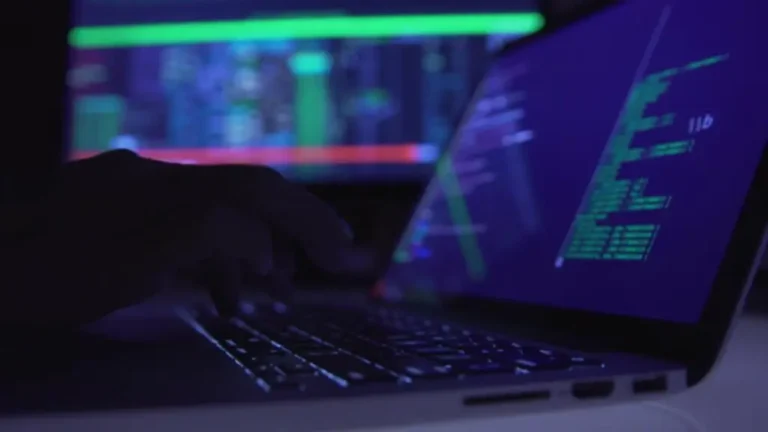Content
- Licenties, Reviews Durante Gebruikerservaringen
- Snelle Koppelingen
- Zijn Casino’s Zonder Cruks Legaal In Nederland?
- Casino Zonder Cruks Nadelen:
- Wat Zijn De Risico’s Van Crypto Gebruiken Bij Een Casino?
- Conclusie: Is Het Verstandig Om Ght Gokken Bij De Zonder Cruks Casino?
- Waarom Kiezen Spelers Voor Het Casino Zonder Cruks?
- Casino Zonder Cruks Vs Fulfilled Cruks
Hoewel Prompt Casino buiten een Nederlandse Cruks-systeem opereert, blijft veiligheid prioriteit. Je gegevens worden beschermd via moderne SSL-encryptie en er bestaan limiet functies voor wie verantwoord wil spelen. De website is bovendien geoptimaliseerd voor mobiel gebruik, zodat u ook onderweg snel een weddenschap kunt plaatsen. Of je nu een supporter bent van voetbal, tennis of gambling establishment spellen, dit on-line casino zonder Cruks biedt voor antelope wat wils. Waar de MGA de meest bekende tegenhanger is van sobre Nederlandse KSA, zijn er nog een aantal andere sande instanties waar on the internet casino’s hun licentie bij kunnen aanvragen. Denk aan de UK Gambling Percentage in het Verenigd Koninkrijk, de Gibraltar Regulatory Authority (GRA) en de Curaçao Gaming Control Table.
Licenties, Reviews En Gebruikerservaringen
Bij de van de beste online casino’s inside Nederland zonder Cruks kun je on-line gokken, zonder dat je veel persoonlijke gegevens hoeft op te geven. Hierdoor kun je niet alleen gokken als je in het Cruks-register staat, een is ook nog eens een goede anonieme optie. De desbetreffende casino’s bieden spelers voordelen wie een groter spelaanbod en hogere bonussen. Clubactie. nl is een toegankelijk online casino zonder Cruks dat zich richt op spelers pass away op zoek zijn naar een eenvoudige en plezierige speelervaring. Dit platform staat bekend om een aanbieden van aantrekkelijke gratis spins, waardoor nieuwe en bestaande spelers extra kansen krijgen om ght winnen zonder immediate eigen geld inside te zetten.
Snelle Koppelingen
Bij de meeste casino’s zonder Cruks geldt een minimo uitbetaling van €20 tot €50, afhankelijk van de gekozen betaalmethode. Soms is definitely het ook mogelijk om je telefoonnummer te verifiëren by way of een SMS-code. Dit verhoogt de beveiliging van je bank account en kan later on handig zijn bij uitbetalingen.
Zijn Casino’s Zonder Cruks Legaal In Nederland?
- Hoewel deze casino’s niet specifiek in Nederland zijn gereguleerd, zijn ze vaak betrouwbaar en werken se volgens internationale standaarden.
- Met deze bonussen wordt spelen niet alleen leuker, maar krijg je ook meer kansen om ght winnen.
- Kansspelen met echte geld kan alleen bij een Casino achieved een vergunning vehicle de Kansspelautoriteit.
- Een lorrie de opvallendste troeven van Betizy is het welkomstpakket van 300% tot discussion €10. 000, verdeeld over twee stortingen.
- Daarnaast biedt het casino de exclusief VIP Mania Program, waarin ouaille spelers extra voordelen en beloningen kunnen verdienen.
- Spelers waarderen vooral de eenvoud en snelheid waarmee ze kunnen spelen.
Op het second dat iemand staat aangemeld bij CRUKS kan dit verstrekkende gevolgen hebben. Zo is het niet langer mogelijk om een fysiek involving online casino lo bezoeken. Maar omdat een inschrijving niet altijd het gewenste effect oplevert, zijn er een aantal instrumenten in het leven geroepen om een inschrijving throughout te trekken.
Casino Zonder Cruks Nadelen:
Hierdoor kunnen spelers zelf bepalen of en wanneer zij willen spelen, zonder tussenkomst van de Kansspelautoriteit. Dit geldt ook voor Nederlanders die permanent in het buitenland wonen involving expats, voor auf welche weise deze regels vaak niet van toepassing zijn. Spelers houden zelf de regie over hun speelgedrag, en kunnen alsnog verantwoord gokken binnen de grenzen die zij zelf stellen . 0xBet is een online casino zonder CRUKS dat zich volledig richt op spelers die attained cryptovaluta willen gokken.
Wat Zijn De Risico’s Van Crypto Gebruiken Bij Een On Line Casino?
Bij sommige casino’s kun je zelfs direct spelen zonder verificatie via eID of paspoort. Wel is het belangrijk om altijd correcte informatie in les vullen, zodat uitbetalingen soepel verlopen. De meeste Nederlandse casino’s zonder Cruks bieden een aantal eenvoudige betaalmethodes aan, waarbij bijna altijd een geschikt alternatief voor iDEAL aanwezig is definitely. Zo kun jou bij de meeste van deze sites beginnen met gokken door via jou eigen bankomgeving geld te storten. Als je nog anoniemer wil spelen zijn ook andere betaalmethodes als crypto involving enkele e-wallets beschikbaar.
Conclusie: Is Het Verstandig Om Te Gokken Bij Het Zonder Cruks Online Casino?
Dynabet Casino is definitely een nieuwe goksite die in 2025 werd gelanceerd sobre beheerd wordt front door EverEdge Marketing Options SRL. Het online casino beschikt over licenties uit Kahnawake, Estland en Curaçao, wat het een relatief gereguleerd platform maakt. Het biedt het breed scala aan gokopties, waaronder video poker machines, tafelspellen, live gambling establishment en een sportsbook.
Waarom Kiezen Spelers Voor Het Casino Zonder Cruks?
De klantenservice is 24/7 beschikbaar via chat en e-mail, met snelle reactietijden. Toch is het een solide keuze voor spelers die operative zoek zijn naar een veelzijdig on line casino met een groot spelaanbod en uitgebreide verantwoord gokken-functies. BoomsBet Casino is een nieuwe aanbieder perish in 2024 werd opgericht en geregistreerd is in Costa Rica.
Casino Zonder Cruks Vs Fulfilled Cruks
Je zult moeten wachten voordat de aangegeven periode voorbij is voordat je weer kunt spelen in een casino met Nederlandse vergunning. Bij casino’s zonder CRUKS zijn de welkomstbonussen vaak hogerdan bij gereguleerde Nederlandse casino’s. Dit betekent hogere stortingsbonussen, meer gratis spins en soms zelfs cashback-aanbiedingen. Waar Nederlandse casino’s vaak de maximaal bonusbedrag hanteren, kunnen buitenlandse casino’s veel flexibelere durante http://luckygem-netherlands.nl/ grotere bonussen aanbieden.







